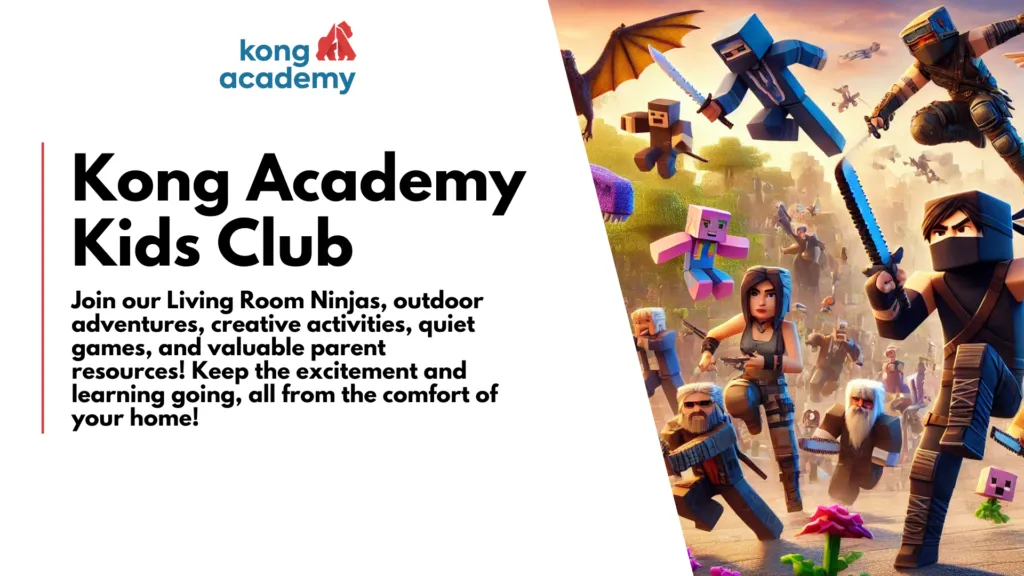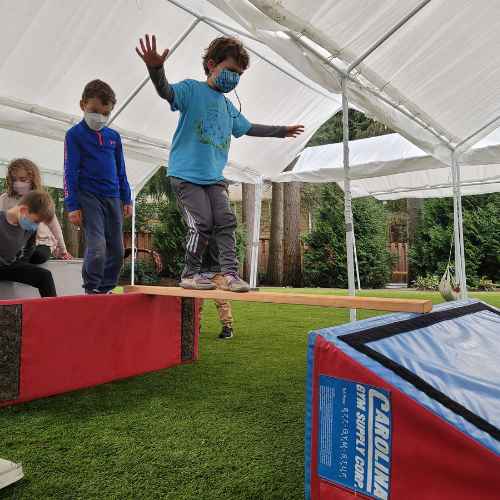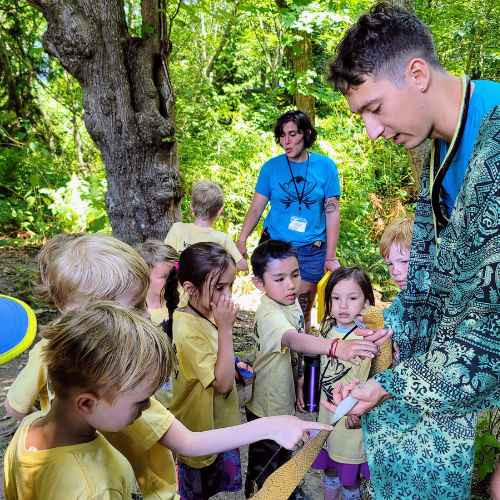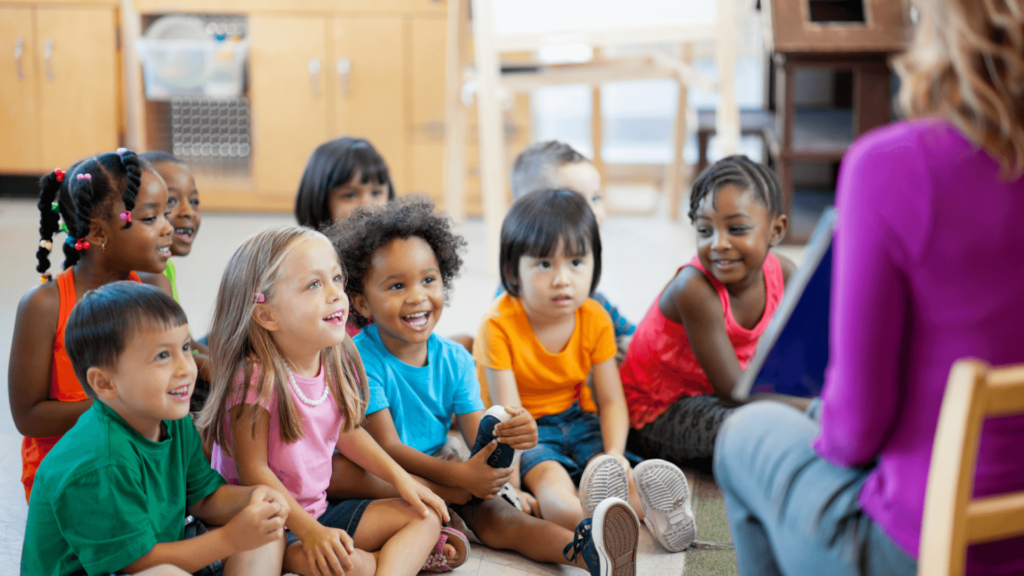
Effective communication is one of the most valuable skills you can teach children. When kids learn how to express themselves clearly and understand others, they can navigate their world with greater confidence and ease. Speaking, active listening, understanding emotions, and using body language appropriately are all important communication skills for kids to learn.
When children can articulate their thoughts and emotions, they feel empowered. Confidence grows as they learn to communicate effectively, whether asking a question in class or resolving a conflict with a friend and beyond.
12 Communication Skills Kids Should Learn To Build Confidence
Children are more likely to try new things and face challenges when they feel confident in their basic communication skills. For example, a child who can clearly explain their needs is more likely to seek help when struggling with a task. Practical strategies children can practice to build confidence include:
- Encouraging children to share their thoughts during family discussions.
- Praising their efforts to communicate, even if they make mistakes.
- Gently guiding them to improve without criticism.
Effective communication includes understanding, listening, and responding appropriately. The following skills can help children become confident communicators who connect well with others.
Active Listening
Active listening is fully engaging with the speaker to understand their message. This involves maintaining eye contact, nodding or using small verbal affirmations like “I see” or “Uh-huh,” and asking clarifying questions. Active listening teaches children to focus on the speaker without interrupting, helping them build stronger connections and avoid misunderstandings.
This skill is vital because it allows kids to process information better and makes others feel valued. For example, in a classroom setting, active listening helps children understand instructions clearly and participate effectively in discussions.
Practice communication activities:
- Telephone Game: Whisper a sentence through a chain of participants to demonstrate how small misunderstandings can alter the message. Discuss how listening carefully can prevent such errors.
- Summarize a Story: Read a short story aloud, then ask children to summarize it, focusing on the main points to show they were paying attention.
Start Using “I” Statements
“I” statements help children express their emotions and needs in a non-confrontational way. For instance, instead of saying, “You’re so mean!” They can say, “I feel upset when you don’t let me play.” This approach prevents blame and focuses on personal feelings, making it easier for others to understand and respond constructively.
By using “I” statements, children learn to communicate assertively and empathetically. This skill is essential in conflict resolution and encourages open dialogue rather than escalating disagreements.
Practice communication activities:
- Emotion Role Play: Present common scenarios, like a sibling not sharing toys, and guide children to respond using “I” statements. For example, “I feel sad when I can’t play too.”
- Discussion Jar: Write prompts such as “I feel ___ when ___” on slips of paper. Children pick one and complete the sentence, practicing how to articulate their emotions.
Nonverbal Communication
Nonverbal communication includes facial expressions, gestures, posture, and tone of voice. These cues often convey more meaning than spoken words. For example, crossed arms might indicate defensiveness, while a smile can show friendliness. Teaching kids to understand and use nonverbal cues effectively enhances their interactions and helps them recognize others’ feelings.
Understanding nonverbal communication also prevents mixed signals. A child saying “I’m fine” with a pout teaches them to align their body language with their words for clarity.
Practice communication activities:
- Charades: Play a game where children act out emotions or activities without words, helping them understand how body language communicates feelings.
- Mirror Game: One child performs movements or expressions, and the other mirrors them, improving their awareness of body language.
Asking Questions
Asking thoughtful questions shows curiosity and helps children gain information or clarity. Open-ended questions, such as “What was your favorite part of the day?” encourage detailed responses, while closed questions like “Did you finish your homework?” seek specific answers.
Learning to ask questions also improves social interactions by showing interest in others. It fosters critical thinking, as kids must decide what they want to know and how to phrase it effectively.
Practice communication activities:
- Question Detective: Assign a topic and challenge children to come up with five open-ended questions about it. For instance, if the topic is “space,” they might ask, “What do astronauts do in space?”
- Interview a Family Member: Have children ask a relative questions about their childhood or hobbies to practice curiosity and conversational skills.
Take Turns Asking Questions
Conversations are a two-way street. While asking questions is important, children must also learn to pause and let others share their thoughts. This skill promotes fairness and ensures everyone feels heard.
Teaching turn-taking builds patience and respect for others’ perspectives, essential in group settings like classrooms or playdates.
Practice communication activities:
- Round Robin: In a group, each child takes turns asking a question. This ensures everyone gets a chance to participate and practice conversational balance.
- Conversation Ball: Toss a ball between participants. Whoever catches it asks or answers a question before passing it on.
Understand Emotions
Emotional intelligence is the ability to identify and understand emotions—both in oneself and others. Children who can name their feelings, like “angry” or “excited,” are better equipped to handle them. They also learn empathy by recognizing emotions in others.
This skill is foundational for building healthy relationships, as it encourages kindness and reduces conflicts. For instance, a child who notices a friend’s sadness can offer comfort rather than ignoring them.
Practice communication activities:
- Emotion Match: Use flashcards with various emotions and ask children to match them with situations, such as “How do you feel when you lose a game?”
- Feelings Chart: Create a chart with different emotions and encourage kids to point to or draw how they’re feeling during specific activities.
Clear & Simple Speech
Clear speech involves choosing words that are easy to understand and speaking in a calm, steady voice. This helps reduce misunderstandings, especially when giving instructions or asking for help.
Teaching kids to simplify their language encourages confidence. For example, instead of saying, “I don’t know what to do with this confusing math,” they can say, “Can you help me with this math problem?”
Practice communication activities:
- Explain It!: Ask kids to explain a simple process, like tying a shoe or making a sandwich, clearly and step-by-step.
- Guess the Object: Describe an object without naming it, using clear and direct language. Others guess what it is based on the description.
Handle Disagreements With Respect
Disagreements are inevitable, but they don’t have to turn into arguments. Teaching children to stay calm, listen to the other person’s viewpoint, and respond politely fosters constructive conflict resolution.
This skill ensures that even when opinions differ, relationships remain intact. For example, saying, “I understand your idea, but here’s what I think,” shows respect while expressing their perspective. Working on their social language skills will enable them to navigate conflicts effectively.
Practice communication activities:
- Conflict Role Play: Present scenarios, like sharing toys, and coach children on using calm language and active listening techniques to resolve disputes.
- Calm Word Challenge: Create a list of phrases like “Let’s talk about this” or “I see your point” and practice using them in role plays.
Practice Gratitude & Kind Words
Make it a point to add polite words in their language development. Polite words like “please” and “thank you” go a long way in fostering positive relationships. Gratitude also teaches children to appreciate what they have and recognize the kindness of others.
Kindness and gratitude create a supportive environment where children feel valued and respected. For example, thanking a friend for sharing shows appreciation and encourages reciprocity.
Practice communication activities:
- Gratitude Journal: Have children write down three things they’re grateful for daily to cultivate a positive mindset.
- Thank-You Tree: Create a paper tree and let children add “leaves” with thank-you notes for family members or friends.
Storytelling
Storytelling allows children to express ideas creatively, organize their thoughts, and build confidence in speaking. It also improves their vocabulary and helps them connect with others through shared experiences.
For example, telling a story about their weekend teaches sequencing (first, next, last) and encourages self-expression.
Practice communication activities:
- Daily Storytime: Encourage kids to share a story about their day or create an imaginative tale.
- Collaborative Story: Start a story and have each child add a sentence to build a narrative together.
Mind Tone and Volume
The tone and volume of speech convey emotion and intention. For instance, a soft tone can show kindness, while a loud, sharp tone may come across as angry or rude. Teaching kids to modulate their voice helps them communicate more effectively and avoid misunderstandings.
This skill is particularly important in emotionally charged situations, where the wrong tone can escalate conflict. Encouraging children to speak clearly, confidently, and kindly ensures their words are received positively.
Practice communication activities:
- Tone Match: Present scenarios (e.g., apologizing to a friend, sharing exciting news) and ask kids to say phrases in the appropriate tone and volume for each situation.
- Voice Control Game: Create a game where children practice whispering, speaking at a normal volume, and projecting their voice for a large audience.
Expand Vocabulary
A rich vocabulary helps children express themselves with greater precision and confidence. Instead of saying “happy,” they might use “excited” or “thrilled,” adding depth to their communication.
Expanding vocabulary also enhances reading comprehension and critical thinking. For example, understanding synonyms, antonyms, and context clues helps children navigate both academic and social situations.
Practice communication activities:
- Word of the Day: Introduce a new word daily, discuss its meaning, and challenge children to use it in sentences throughout the day.
- Synonym Search: Choose a common word like “big” or “fast” and have children brainstorm or find synonyms in books or online.
Incorporating these effective communication skills into your child’s daily routine will help them build a strong foundation for both social skills and academic success. With time and consistent practice, these skills will become second nature, empowering your child to navigate the world with confidence and kindness.
Strong communication skills for kids are essential for their emotional and social growth. By teaching active listening, clear expression, and respectful disagreement, you’re equipping kids with tools they’ll use for a lifetime. Remember, the journey to mastering communication is ongoing, so patience and encouragement are key.
At Kong Academy, we specialize in programs designed to empower kids with the tools they need to grow emotionally and socially. Visit Kong Academy today and take the first step in building a brighter, emotionally balanced future for your child!
GET Access to the ULTIMATE PLAY DATE PACKAGE (Value: $49) for FREE!
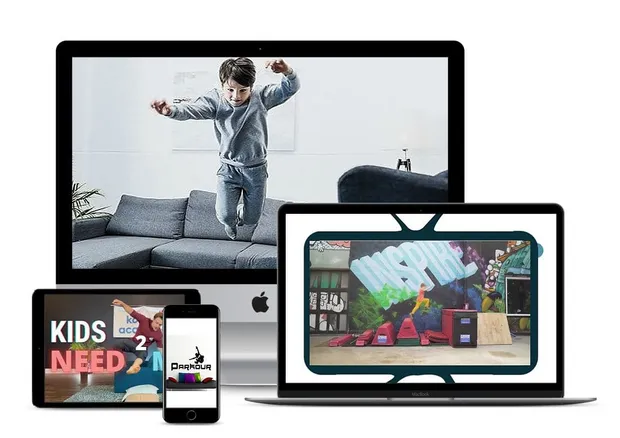

7-Day Crystal Shard Adventure
Unleash your child’s potential with our 7-day crystal shard movement adventure!

